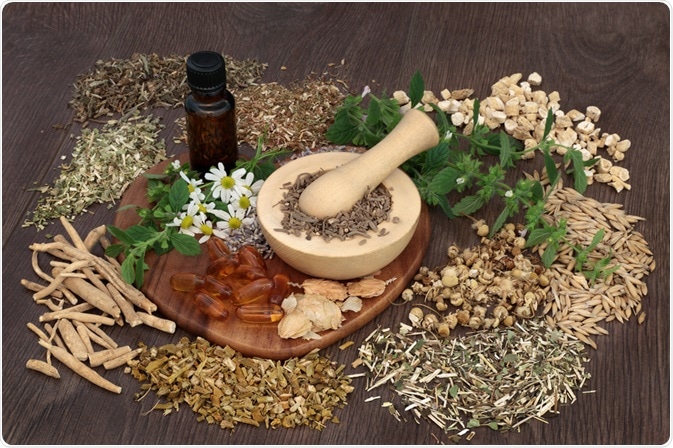Excitement About Herbalife
Excitement About Herbalife
Blog Article
The Facts About Herbalife Uncovered
Table of ContentsThe 10-Second Trick For HerbalifeWhat Does Herbalife Do?Some Known Factual Statements About Herbalife Not known Facts About Herbalife

In 1990, expenditure connected with "alternative" therapy in the United States was approximated to be US$ 13.7 billion. This had actually increased by the year 1997, with organic medicines expanding quicker than any various other different therapy (Eisenberg et al. 1998). In Australia, copyright, and the United Kingdom, annual expenditure on conventional medication is estimated to be US$ 80 million, US$ 1 billion, and US$ 2.3 billion, respectively.
The overall business worth of the ethnobotanicals market can not be ignored. For instance, in 1995, the total turnover of nonprescription-bound natural medicines in pharmacies amounted to virtually 30% of the complete turnover of nonprescription-bound medicines in Germany, and in the USA, the yearly retail sales of herbal items was approximated to be US$ 5.1 billion.
Not known Factual Statements About Herbalife
In China, the total value of natural medication manufactured in 1995 got to 17.6 billion Chinese yuan (around US$ 2.5 billion; Eisenberg et al. 1998; WHO 2001). This fad has continued, and yearly profits in Western Europe got to US$ 5 billion in 2003-2004 (De Smet 2005). In China, sales of organic products completed US$ 14 billion in 2005, and profits from natural medications in Brazil was US$ 160 million in 2007 (Globe Health And Wellness Organization; http://www.who.int/topics/traditional_medicine/en/). In China, in 2003, typical natural medications played a famous duty in the technique to contain and treat severe intense respiratory system syndrome (SARS), and in Africa, a standard natural medicine, the Africa flower, has actually been used for decades to deal with losing symptoms related to HIV (De Smet 2005; Tilburt and Kaptchuk 2008).
Herbs and plants can be processed and can be taken in different methods and types, and they include the whole natural herb, teas, syrup, important oils, lotions, salves, massages, capsules, and tablets which contain a ground or powdered kind of a raw herb or its dried remove. Plants and herbs remove differ in the solvent used for extraction, temperature level, and removal time, and consist of alcoholic extracts (tinctures), vinegars (acetic acid extracts), warm water remove (tisanes), lasting steamed remove, typically roots or bark (products), and cold mixture of plants (macerates).

About 200 years back, the very first pharmacologically active pure compound, morphine, was created from opium extracted from seeds sheathings of the poppy Papaver somniferum. her comment is here This discovery showed that drugs from plants can be detoxified and administered in exact dosages despite the source or age of the product (Rousseaux and Schachter 2003; Hartmann 2007).
3 Simple Techniques For Herbalife
With this continued fad, items from plants and all-natural sources (such as fungi and marine microbes) or analogs motivated by them have actually added significantly to the commercial medicine prep work today. Examples include anti-biotics (e.g., penicillin, erythromycin); the cardiac stimulant digoxin from foxglove (Digitalis purpurea); salicylic acid, a precursor of pain killers, originated from willow bark (Salix spp.); reserpine, an antipsychotic and antihypertensive drug from Rauwolfia spp.; and antimalarials such as quinine from Cinchona bark and lipid-lowering agents (e.g., lovastatin) from a fungus (Rishton 2008; Schmidt et al.
Also, even more than 60% of cancer cells therapeutics on the market or in testing are based upon all-natural products. Of 177 drugs accepted around the world for therapy of cancer, greater than 70% are based on all-natural items or mimetics, a number of which are boosted with combinatorial chemistry. Cancer therapies from plants consist of paclitaxel, separated from the Pacific yew tree; camptothecin, obtained from the Chinese "satisfied tree" Camptotheca acuminata and made use of to prepare irinotecan and topotecan; and combretastatin, originated from the South African bush willow (Brower 2008.
2010). Between 2005 and 2007, 13 medicines stemmed from natural products were accepted in the United States. Greater than 100 natural product-based medicines remain in medical studies (Li and Vederas 2009), and of the total 252 medicines in the Globe Wellness Company's (WHO) essential medicine list, 11% are exclusively of plant beginning (Sahoo et al.
WHO has acknowledged the vital payment of typical medication to provide important care (World Health and wellness Organization, http://www.who.int/topics/traditional_medicine/en/. In 1989, the united state Congress developed the Office of Choice Medicine within the National Institutes of Wellness to motivate clinical research study in the field of typical medication (http://nccam.nih.gov, last accessibility: November 5, 2010), and the European Scientific Cooperative on Phytotherapy (ESCOP) was established in 1989 with the goal of progressing the scientific standing and harmonization of phytomedicines at the European degree (www.escop.com, last access: November 5, 2010).
How Herbalife can Save You Time, Stress, and Money.
In the USA, the National Center for Complementary and Alternate Medication at the National Institutes of Health and wellness spent about US$ 33 million on herbal medicines in the financial year 2005; in 2004, the National Canadian Institute dedicated almost US$ 89 million for studying a series of conventional treatments. While this range of financial investment is reduced compared to the overall study and growth costs of the pharmaceutical industry, it nonetheless mirrors real public, market, and governmental passion in this area (Li and Vederas 2009). With significant expansion in the interest in and use conventional medicines worldwide, two major locations of problem develop that bring significant difficulties.

Report this page